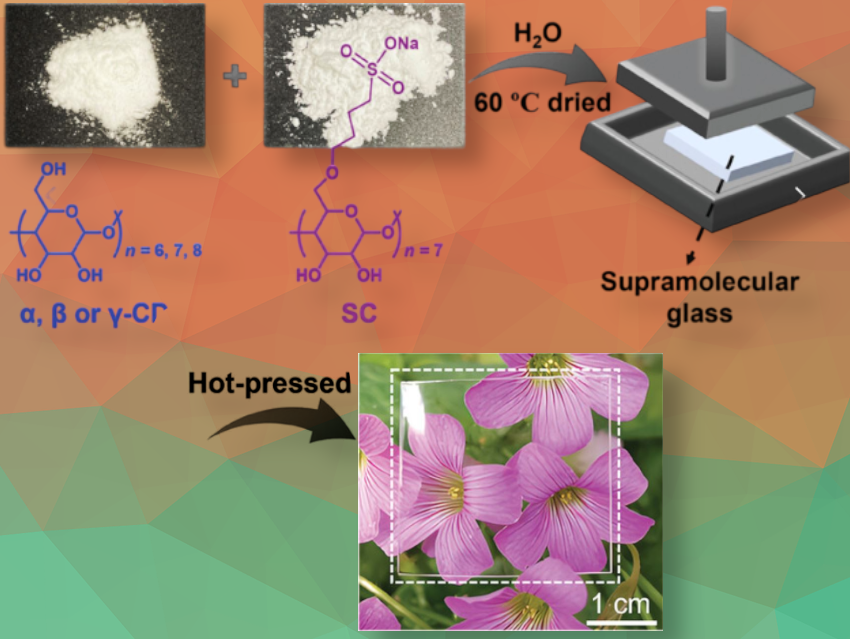Transparent materials are widely used in industries, everyday life, and scientific activities. Historically, natural minerals and resins have been used for transparent materials, but the glass industry and polymers have revolutionized the field. The development of new, lightweight, and durable artificial transparent materials is a challenge in synthetic chemistry.
Shengyi Dong, Hunan University, Changsha, China, and colleagues have developed a strategy for creating low-molecular-weight transparent materials using cyclodextrins as the building blocks and solvent evaporation. They constructed bulk supramolecular glass via noncovalent polymerization.
Cyclodextrins, cyclic analogs of oligosaccharides which have numerous H-bonding sites, were used to form 3D networks from multiple cyclodextrin-based assembly structures. Solvent evaporation mimicked the glass annealing process, transitioning from a dilute cyclodextrin solution to a viscous material, during which the assembled structures cross-linked into bulk glass.
Their method, involving sodium sulfobutylether-β-cyclodextrin and α-, β-, and γ-cyclodextrins, produces transparent materials without requiring harsh conditions or special equipment. The newly formed glass shows good thermal processability, high mechanical strength and dielectric constant, excellent visible light transparency, and good adhesion performance. Importantly, the structural characteristics of long-range disorder and short-range order are observed in cyclodextrin glass. According to the researchers, the design strategy and preparation method provide new possibilities for developing artificial optical materials.
- Macrocyclic Supramolecular Glass: New Type of Supramolecular Transparent Materials,
Guohong Yao, Yanjuan Pan, Fenfang Li, Shengyi Dong,
Small 2024.
https://doi.org/10.1002/smll.202405337



